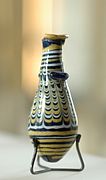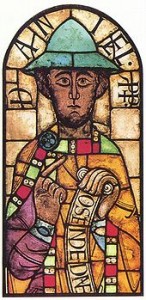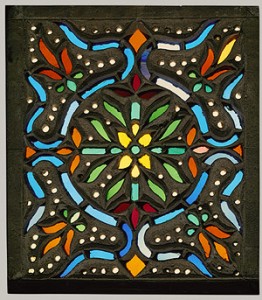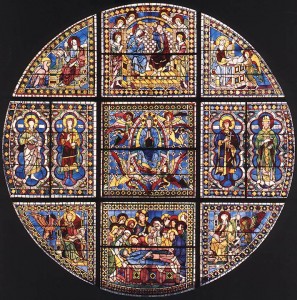Almost everyone is familiar with the stunning art form that is stained glass, however, how many of you have thought about it’s history? Who came up with the idea of using coloured glass in windows to achieve interesting light effects? Who first joined together coloured and
textured glass with lead to produce amazing designs and effects? Read on to discover more about this unique art form.
Many say coloured glass was discovered by accident. According to Pliny, shipwrecked Phoenician sailors placed their cooking pots upon blocks of soda and lit fires beneath them. In the morning they discovered that the fire had melted the soda and sand together, it had then cooled and hardened into glass. However it is probably more likely discovered by the Ancient Egyptians, they were producing glass beads as early as 4500BC! They also produced many beautiful examples of coloured glass including vases, flasks and jars.



The earliest stained glass windows began to be seen around the 7th century in British monasteries and churches. The first known example of this occurs in 675 AD in the Monastery of St. Peter, hundreds of pieces of coloured glass and lead have been discovered here. The earliest intact stained glass windows are from the Augsberg Cathedral in Germany. These five windows date from 1065 and feature the prophets David, Jonah, Daniel Moses and Hosea.

Around the 13th century Arabian stained glass windows started appearing, however they used a different technique. Glass was inserted in pierced stone or marble or glazed in plaster. Sometimes iron was used to further strengthen the windows. These windows heavily feature the use of intricate geometry due to Islamic restrictions regarding depictions in artistic works. Arabian glass windows were introduced into Europe when the Moors entered Spain. Once adopted by the Europeans, stained glass began to evolve in many different styles. Romanesque architecture feature very small window openings with rounded tops. The windows had to let in a very large amount of light and depict well-known saints or stories from the bible, the Augsburg windows previously mentioned are an example of this style.

As the wealth of the medieval church grew, so did their patronage of the arts. Many new churches and cathedrals were constructed during this period, many of them featuring stained glass windows. These windows of this period all share similar themes and iconography and are collectively known as “Gothic”. This movement spread all over Europe to places such as England, Germany, Vienna and Prague. In fact, the “first modern window” is said to be the oculus in the Cathedral of Siena. The window is circular and is divided with a metal grid instead of stone. This period ended in second quarter of the 14th century.
Credit to Stained Glass Association of America.
Stay tuned for part 2 of our (brief) history of stained glass.